The Conscious Electromagnetic Information (cemi) Field Theory
Most scientists now embrace monism, that the stuff of mind is the same as the stuff of the brain, matter. Many, particularly in the artificial intelligence field, take the view that consciousness is just an inevitable product of complex computation, as the evolutionary biologist T. H. Huxley put it, like the steam whistle, which accompanies the work of a locomotive [but] without influence upon its machinery.
In the steam whistle view, consciousness just pops out of the complex interconnected computations performed by the network of neurons within our brain. But why should it? The Internet now links up millions of computers in a gigantic superbrain that will soon rival our own organic version in computational capability. But does anyone seriously believe that, like HAL, driven by its digital consciousness, the Internet may soon turn on us its creators? The plain fact is that nothing rendered in silicon remotely resembles a conscious mind.
Another problem with the steam whistle is that it goes against the grain of everything we have learnt since Darwin about how complex biological systems evolved. Every bit of our body and our mind is here today because it provides some function some advantage to us – that been captured, and improved upon by natural selection over millennia. Bodies dont have steam whistles, but if they did, they would have a role to play in the survival of the creature that blew them. Consciousness is a product of evolution and, as such, it has a role to play in our survival. What is that role?
The most obvious answer may be the right one – we are aware because we then have the power to change our actions. Consciousness endows us with free will. There are many operations that our brain performs automatically, without conscious control simple tasks like walking, to incredibly complex tasks like playing a musical instrument from a written score. But it is hard to remove the impression that under some circumstances, our conscious brain takes over, to influence and will these actions.
Consider driving along a familiar road. You may be listening to the radio, thinking about some problem at work, but your brain is busy performing all the complex computations necessary to control your limb movements and maintain your car on the busy road, unconsciously. You spot a hazard sign Roadworks Major Congestion Ahead!and immediately your conscious mind takes control, to slow the car and perhaps try to find an alternative route home.What is it that is taking control in these situations?
What we need to look for is something that is a product of the brains activity, that integrates information but which also has the power to influence that activity. Surprisingly, we have known for years that such an entity exists within our brain. The neurons in our brain transmit electrical signals along and between nerve fibres. It is always assumed that the electrons and neurotransmitters moving down these nerves are the movers and shakers of neuronal computation.
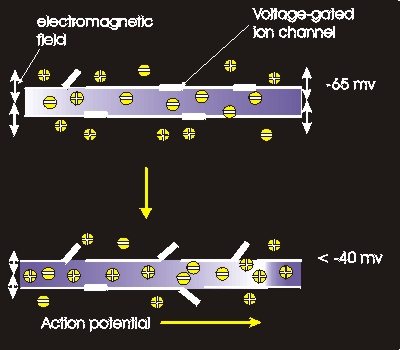
However, all electrical circuits – and that’s basically all neurones are generate an associated energy field, known as an electromagnetic field or em field. This field contains precisely the same information as the circuitry that generated it. However, unlike neuronal information, which is localised in single or groups of neurons, the brain’s em field will bind the neuronal information into a single integrated whole.
This consciousness electromagnetic information field (cemi field) theory may sound far-fetched, but it rests on just three propositions. The first is that the brain generates its own em field, a fact that is well known and utilised in brain scanning techniques such as EEG. The second is that the brain’s em field is indeed the seat of consciousness. This is far harder to prove but there is plenty of evidence that is at least consistent with this hypothesis. Em fields are waves that tend to cancel out when the peaks and troughs from many unsynchronised waves combine. But if neurones fire together, then the peaks and troughs of their em fields will reinforce each other to generate a large disturbance to the overall em field.
In recent years neuroscientists in many laboratories across the world have become interested in the phenomenon of neuronal synchrony. Experiments from Paris’ Laboratoire de Neurosciences demonstrated synchronous firing in distinct regions of the brain when a subject’s attention is aroused by a pattern that resembled a face. When the subject saw only lines then his neurones fired randomly but when the subject realised he was looking at a face, his neurones snapped into step to fire synchronously. In this, and in many similar experiments, neurone firing alone does not correlate with awareness but the em field disturbance generated by synchronous firing, does. The simplest explanation is that the brain’s em field is conscious awareness – the cemi field.
The last cemi field proposition is that the brain’s (conscious) em field can itself influence neuronal firing. Like the first proposition, this is easy to prove and is indeed inevitable. Radio sets and TVs are designed to be sensitive to the electromagnetic fields of radio waves; but in fact all electrical phenomena are sensitive to the surrounding em field. Neurones are fired by specific structures, known as voltage-gated ion channels that respond to the external em field. Mostly they are gated in such a way that only massive changes to the brain’s em field are likely to influence neurone firing. However, in a busy brain there will be many neurones teetering on the brink of firing and these undecided neurones may be exquisitely sensitive to the em field. The cemi field our consciousness – will come into play when the brain is poised to make delicate decisions. Several recent papers have indeed demonstrated exactly this phenomenon, for example, in their 2011 paper ‘Ephatic coupling of cortical neurons‘, Christof Koch’s group at Caltec demonstrated that weak EM fields, of similar strength to natural brain EM field, synchronze neuron firing patterns. Similarly, in their 2010 paper ‘Endogenous Electric Fields May Guide Neocortical Network Activity‘ David McCormick’s group at Yale demonstrated that brain-strength EM field influennce neural firing in the brain. There’s also a nice Scientific American article on McCormick’s paper.
That concept of information encoded as an electromagnetic field is actually a very familiar one. We routinely encode complex images and sounds in em fields that we transmit to our TV and radio sets. What I am proposing is that our brain is both the transmitter and the receiver of its own electromagnetic signals in a feedback loop that generates the conscious em field as a kind of informational sink. This informational transfer, through the cem field, may provide distinct advantages over neuronal computing, in rapidly integrating and processing information distributed in different parts of the brain. It may also provide an additional level of computation that is wave-mechanical, rather than digital; one that drives our free will. This is the advantage that consciousness provides: the capacity to make decisions.
Recent Papers
I first described my theory that integrated neuronal information in the brain’s EM field is the seat of consciousness in my 2000 book, Quantum Evolution, proposing that “the brain’s ‘EM field … integrate[s] information from all of the calculations … performed by … [its] logic gates”. However, in its first incarnation it was called the conscious electromagnetic field (cem) theory.
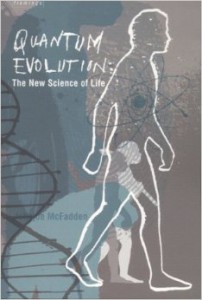
I have also published several papers that outline the cemi field theory. Click on the images below to get the pdf files:

J McFadden. Synchronous firing and its influence on the brain’s electromagnetic field: evidence for an electromagnetic (EM) theory of consciousness. Journal of Consciousness Studies 9 (4):23-50, 2002.
In this paper i presented the evidence that our best correlate of consciousness is synchronous firing of neurons. For example, the neurobiologist Wolf Singer exposed monkeys to a low level stimulus that was on the edge of perception. Neurons fired at the same rate irrespective of whether the monkeys perceived the stimulus of not. However, when they monkeys didn’t notice the stimulus, then their responding neurons fire asynchronously. Yet, when those same monkeys attended to the stimulus then those same neurons fire at the same rate but synchronously.
I discuss the role of the brain’s EM field in neurons and brains and provide evidence, for example from Transcranial Magnetic Stimulation (TMS) of the brain, that the brain responds to EM fields of similar structure and magnitude as the brain’s endogenous EM field. I propose that, alongside the non-conscious neural mind that performs the mental operations that drive our involuntary actions, is our conscious cemi field which is the seat of our conscious mind.

J McFadden. The conscious electromagnetic field theory: the Hard Problem made easy. Journal of Consciousness Studies 9 (8):45-60, 2002.
In this paper I point out that the brain’s EM field, like all EM fields, has the same level of unity as a single photon yet it encodes all of the information encoded by synchronously-firing neurons in the brain. I argue that consciousness is what being an electromagnetic field that inputs sensory information and outputs motor actions feels like. I also discuss a very interesting experiment performed by the Cognitive Neuroscience Group (GOGS) at the University of Sussex who used a physically-modifiable silicon chip known as a field-programmable gate array (FPGA) chip, to perform the simple task of recognising a musical note. However, rather than design their circuit, they evolved it! The team initially set the gate configurations randomly but then selected the most successful configurations, essentially cloning them, and ‘mutating’ them using a genetic algorithm before another round of selection and so on until they obtained a circuit that worked pretty well. Remarkably, by evolving, rather than designing a computer, they captured EM field influences – the circuit used EM fields as well as digital circuits to compute. This finding could have huge implications for AI: designing a conscious computer may be extraordinarily hard but evolving one might not be so challenging.

J. McFadden. The CEMI field theory: Seven clues to the nature of consciousness. Chapter 12 of “The Emerging Physics of Consciousness” ed. Jack A. Tuszynski. Springer Berlin Heidelberg 2006. pp 385-404.
In this chapter I describe seven odd features of consciousness and show how they are each consistent with the cemi field theory. For example, it is well known that the non-conscious (automatic) mind appears to be a parallel computer able to process multiple tasks simultaneously: we can ride a bicycle whilst chewing gum . However, the conscious mind can only engage in one task at a time – we can’t read a book whilst chatting to a friend. This is explained within the cemi theory. Whereas the non-conscious neural mind, like a conventional parallel computer, processes several streams of information concurrently along separate neuronal paths; conscious information goes through a single EM field so it can only engage on one task task at a time: we can only have one idea in our head at a time.
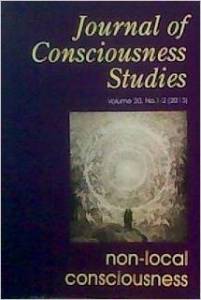
Johnjoe McFadden. The CEMI Field Theory Gestalt Information and the Meaning of Meaning. Journal of Consciousness Studies 20 (3-4):3-4 (2013).
This paper argues that conscious meaning is the integration of information within a single mental object in the unified cemi field. For example, when we contemplate a familiar face, such as Jennifer Anniston’s, then information about her visual features, voice, character, movie and TV roles is all bound together into a single unified idea, or gestalt, in the cemi field. In contrast, although the non-conscious neural mind can similarly process complex information to generate a single response, such as a verbal report that ‘that is Jennifer Anniston’, its information is dissected and processed along thousands of independent digital neural pathways: it is distributed and thereby stripped of meaning rather than unified. It can thereby never correspond to meaningful consciousness. Conventional computers have the same overall architecture as the non-conscious mind and will never be conscious. They can’t think in gestalts.

Johnjoe McFadden. The CEMI Field Theory Closing the Loop. Journal of Consciousness Studies 20 (1-2):1-2 (2013).
This paper provided an update on the cemi field theory including recent evidence from several labs, that external EM fields, of similar strength and magnitude as the brain’s endogenous EM field, is capable of modulating neural firing. The conclusion is inescapable: the brain processes information not only digitally via neurons and synapses but also as whole ideas through its endogenous EM field: the brain’s cemi field. This paper generated a comment/criticism from me and Jonathan C.W. Edward which is answered here.
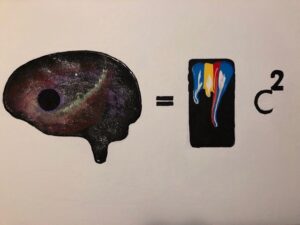
Mass-energy equivalence of the effects of social media on the human brain. Painting by Hamza Mustapha.
In this paper, I further explore what is meant by ‘integrated information’ and argue that what is usually meant by the term is information that is integrated in time: a single output that depends on sequential processing of information from thousand, millions or billions of inputs. This kind of integration is rather like that of a university admissions system that inputs many different parallel streams of input information from candidate’s cv’s, exam results, cover letters and references, to generate a single output: either an offer letter or rejection. However, although the information in the letter may be said to integrate its many inputs, it obviously does not physically integrate them. Instead it performs a temporal integration: a downstream effect generated by many upstream causes. The outputs of a computer similarly temporally integrate a computer’s many inputs. I describe this is Algorithms in Space (AIiS). None of these can correspond to the physically integrated information characteristic of consciousness as the integrated information in both forms of computing isn’t even present simultaneously in the neural brain/computer. It is only within the brain’s EM field, the cemi field, that inputs, processed information and outputs may be simultaneously present in a single physically-integrated system: the cemi field. Algorithms implemented in Time (AIiT), rather than AIiS. This is the only feasible seat of consciousness.
I go on to make the entirely novel proposal that the cemi field performs information processing as algorithms that are implemented in space rather than time. This is illustrated in this figure, which illustrates the kind of computing performed by a conventional computer or conventional neural circuits (a) or within EM fields (b), such as the cemi field.
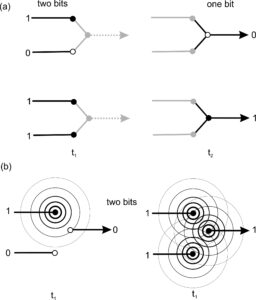
(a) Illustration of how the single bit output of an AND logic gate integrates the two bits of information encoded in its two inputs to output a single bit that represents an integration of the gate’s inputs. In reality, the integration is causal in the sense that the state of the output bit at time t2 is dependent on both input bits at time t1. Note that input information is separated in time from the output information. (b) Illustration of how dynamic EM field information can integrate information and function as a logic gate. An AND gate is shown with two inputs and a single output, each encoded either a zero or one all at time t1. The inputs are dipoles that act as electromagnetic field (EMF) transmitters that oscillate between two states either firing (oscillating corresponding to input = 1) or non-firing (not oscillating, input = 0) states. The output is then an EMF receiver that implements the AND rule to output a signal.
Note that this field-based algorithm that is implemented in space (AIiS), rather than time (AIiT), can only work if all of its inputs are firing together. It thereby predicts that, if consciousness is implemented by neurons that are similarly processing information through this type of algorithm implemented in space rather in time, then they will fire synchronously. The theory thereby accounts for the strong experimental correlation between synchronous neural firing and consciousness.
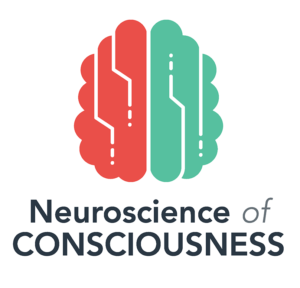
McFadden, Johnjoe. “The Electromagnetic Will.” NeuroSci 2, no. 3 (2021): 291-304.
In this paper I explore how, in the conscious electromagnetic information (cemi) field theory in which the brain’s electromagnetic (EM) field is the seat of consciousness, what we call free will is its output. The theory accepts that most actions are initiated by the first non-conscious stream that is composed of neurons – the brain’s wires. These wired non-conscious involuntary actions are invisible to our EM field-located thoughts since the neurons involved are insulated from EM field influences. Crucially however, the theory also proposes that voluntary actions are driven by neurons that receive EM field inputs and are thereby visible to our EM field-located thoughts.
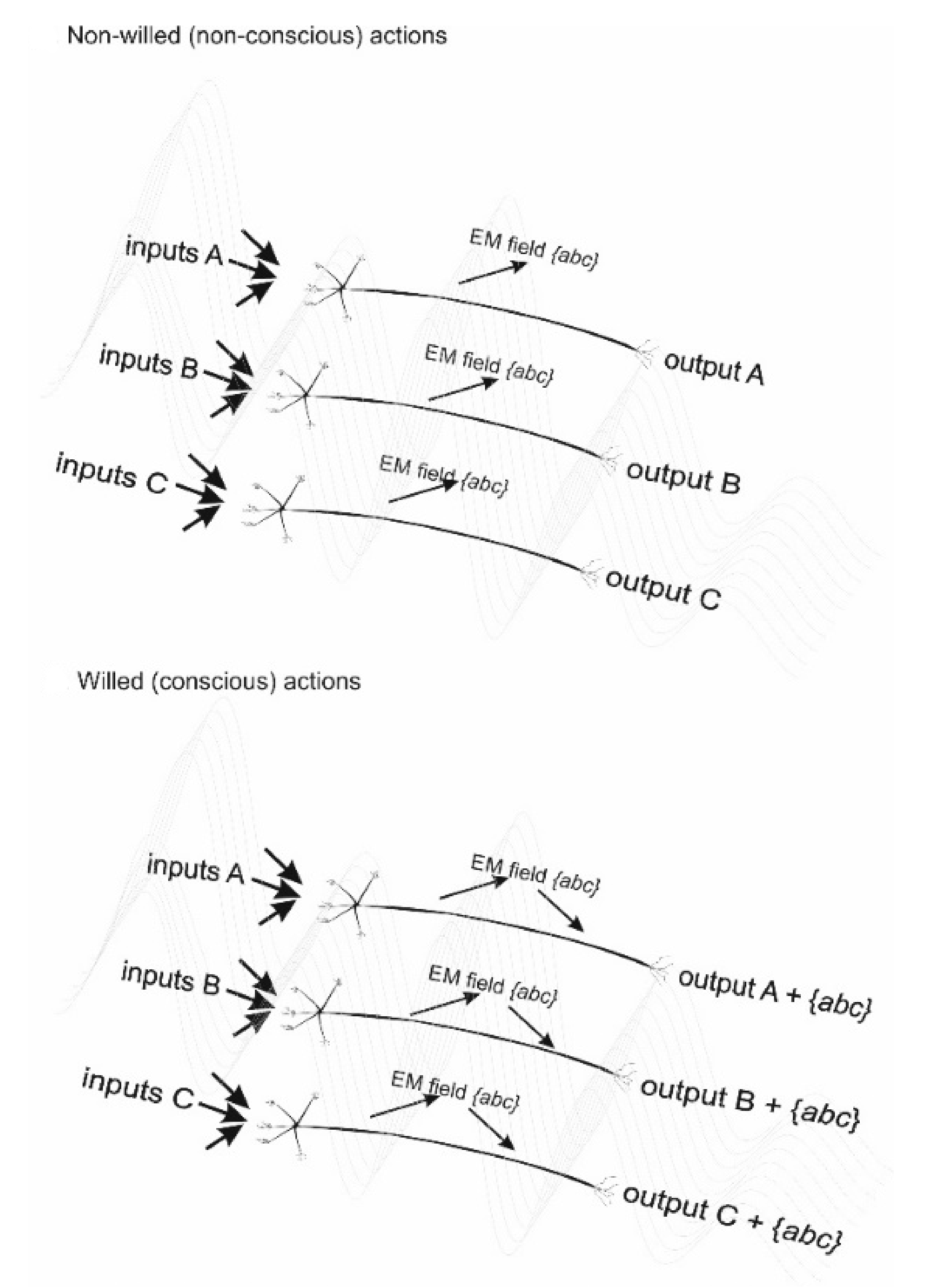
In the paper, I review the extensive evidence for EM field/ephaptic coupling between neurons and the increasing evidence that EM fields in the brain are a cause of behaviour. I conclude by arguing that though this EM field-driven will is not free, in the sense of being acausal, it nevertheless corresponds to the very real experience of our conscious mind being in control of our voluntary actions. Will is not an illusion. It is our experience of control by our EM field-located mind. It is an immaterial, yet physical, will
In the paper I also make a detailed comparison between cemi field theory and both global workspace theory, arguing that the cemi field theory incorporates aspects of both but, in contrast to either, instantiates consciousness in a physical entity – the brain’s EM field – rather than an abstraction. I also highlight 13 predictions of the cemi field theory:
(1) Synchronous neuronal firing will correlate with conscious neuronal states.
(2) Stimuli that reach conscious awareness will be associated with EM field modulations that are strong enough to directly influence the firing of neurones that direct motor actions.
- (3) Stimuli that do not reach conscious awareness will not be associated with EM field modulations that do not influence the firing of neurones that direct motor actions.
- (4) Increased complexity of conscious thinking should therefore correlate with increased complexity of the brain’s EM field.
- (5) Agents that disrupt the interaction between the brain’s EM field and neurones will induce unconsciousness.
- (6) Memory will be associated with strong EM field perturbations that alter synaptic connections.
- (7) The brain’s EM field should be relatively insulated to perturbation from exogenous EM fields encountered in normal environments.
- (8) Appropriately-shaped artificial radio frequency or microwave EM fields that penetrate brain tissue should be capable of reinforcing or inhibiting motor response normally associated with event-related potentials.
- (9) Arousal and alertness will correlate with conditions in which EM field fluctuations are most likely to influence neurone firing; conversely, low arousal and unconsciousness will correlate with conditions when EM fields are least likely to influence neurone firing.
- (10) The evolution of consciousness in animals should correlate with an increasing level of electrical coupling between the brain’s endogenous EM field and (receiver) neurone firing.
- (11) Conventional computers will never be conscious.
- (12) Computers that compute through EM field interactions will be conscious.
- (13) Consciousness should demonstrate field-level dynamics.
Johnjoe McFadden. Consciousness: Matter or EMF?
Front. Hum. Neurosci., 18 January 2023. Sec. Cognitive Neuroscience
Volume 16 – 2022 | https://doi.org/10.3389/fnhum.2022.1024934
Conventional theories of consciousness (ToCs) that assume that the substrate of consciousness is the brain’s neuronal matter fail to account for fundamental features of consciousness, such as the binding problem. Field ToC’s propose that the substrate of consciousness is the brain’s best accounted by some kind of field in the brain. Electromagnetic (EM) ToCs propose that the conscious field is the brain’s well-known EM field. EM-ToCs were first proposed only around 20 years ago primarily to account for the experimental discovery that synchronous neuronal firing was the strongest neural correlate of consciousness (NCC). Although EM-ToCs are gaining increasing support, they remain controversial and are often ignored by neurobiologists and philosophers and passed over in most published reviews of consciousness. In this review I examine EM-ToCs against established criteria for distinguishing between ToCs and demonstrate that they outperform all conventional ToCs and provide novel insights into the nature of consciousness as well as a feasible route toward building artificial consciousnesses.
Johnjoe McFadden. Carving Nature at Its Joints: A Comparison of CEMI Field Theory with Integrated Information Theory and Global Workspace Theory
Entropy 2023, 25(12), 1635; https://doi.org/10.3390/e25121635
Abstract
Abstract
“And once I had recognized the taste of the crumb of madeleine soaked in her decoction of lime-flowers which my aunt used to give me (although I did not yet know and must long postpone the discovery of why this memory made me so happy) immediately the old grey house upon the street, where her room was, rose up like the scenery of a theatre to attach itself to the little pavilion, opening on to the garden, which had been built out behind it for my parents (the isolated panel which until that moment had been all that I could see); and with the house the town, from morning to night and in all weathers, the Square where I was sent before luncheon, the streets along which I used to run errands, the country roads we took when it was fine. And just as the Japanese amuse themselves by filling a porcelain bowl with water and steeping in it little crumbs of paper which until then are without character or form, but, the moment they become wet, stretch themselves and bend, take on colour and distinctive shape, become flowers or houses or people, permanent and recognisable, so in that moment all the flowers in our garden and in M. Swann’s park, and the water-lilies on the Vivonne and the good folk of the village and their little dwellings and the parish church and the whole of Combray and of its surroundings, taking their proper shapes and growing solid, sprang into being, town and gardens alike, all from my cup of tea.” Marcel Proust, Memories of Things Past, 1913
Articles
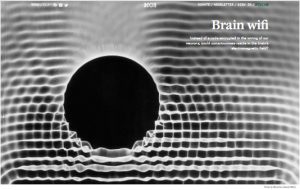
In this online Aeon magazine article I provide an outline of the cemi field theory.
You can also read an interesting exchange about the cemi theory between me and Steve Grand here.
Other EM theories of consciousness
Several other researchers have also proposed that brain em fields are the substrate of consciousness, including:
Dr. Susan Pockett, University of Auckland
E. Roy John, NYU Medical Center, New York
Dr. Andrew Fingelkurts and Dr Alexander Fingelkurts
Some common questions
Are endogenous em fields known to have any other biological role?
Yes. Colin McCaig’s group at the University of Aberdeen have shown that naturally-occuring em fields play a vital role in wound healing in the cornea of rats (published in Proceedings of the National Academy of Sciences, vol 99, p. 13577) and Kenneth Robinson (Perdue University) and Michael Levin (The Forsythe Institute, Boston) have demonstrated that endogenous em fields are involved in embroyo development – see review in Science News. There is an interesting review on this topic, “The Body Electric”, written by Diane Martindale in the 15 May 2004 edition of New Scientist.
Can the cemi theory account for telepathy?
No, I’m afraid not. The em field outside the head is far too weak and it is highly unlikley that any other brain could detect it, and still more unlikely that the other brain could decode the em field information that was encoded by your brain (which i think is a good thing).
Can the cemi field theory account for ghosts
Definately not! If ghosts were em field they’d be very easy to detect. Also, em fields are generated by charged molecules – they don’t hang around in space without an obvious source. If ghosts were some kind of em field then we would be able to locate the source of that field.
Why don’t external fields (from power lines, mobile phones etc.) affect our thoughts?
The head acts as a pretty effective Faraday cage that screens out most static electric external fields. Static magnetic fields (from eg. MRI scanners) will penetrate the head but don’t induce currents so are unlikely to change neuron firing patterns and thereby produce a reportable effect. High frequency fields (eg. from mobile phones) may penetrate the head but are unlikely to interact with low frequency brain waves. Low frequency magnetic fields may penetrate the head and interact with the cemi field – and there is plenty of evidence for this in Transcranial Magnetic stimulation (TMS) that induces lots of behavioural effects – see my first JCS paper for more details.
Does the cemi field survive after death?
mmm an interesting question. My hypothesis is that conciousness is the experience of information, from the inside. There is a postulate in physics that information is neither created or detroyed – the conservation of information ‘law’. It is however just a postulate, nobody has ever proved it. But, if true, it would suggest that awareness (associated with that information) – in some form – might survive death.
Useful Links
David Chalmer’s Homepage – one of the clearest thinking philosophers on consciousness
University of Arizona Centre for Consciousness Studies
Stuart Hameroff’s Homepage learn all about those busy microtubules and their proposed role in quantum consciousness.
Bruce MacLennan’s Homepage – field computing and its role in the brain
Electromagnetic Field Theories of Consciousness: Opportunities and Obstacles.
Research Topic in Frontiers in Human Neuroscience Journal, 2023
Journal of Consciousness Studies
Neuroscience of Consciousness Journal
Cognitive Science at the University of Southampton – excellent archive of papers
Steve Lehar’s homepage – excellent introduction to Gestalt ides in perception and consciousness
